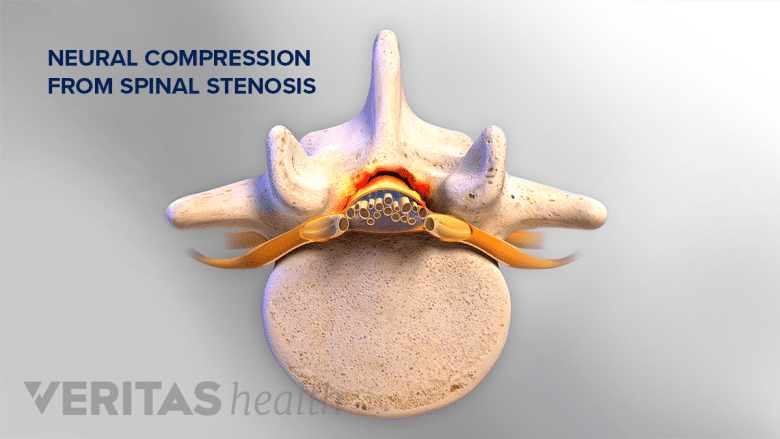Bone spurs are a common finding in imaging tests, especially for people over age 50. Many patients are told that they have bone spurs in their back or neck, with the implication that the bone spurs are the cause of their back pain. While bone spurs may cause pain, many do not and it is important to receive an accurate clinical diagnosis for the underlying cause of the pain in order to form an effective treatment plan.
In This Article:
- Bone Spurs (Osteophytes) and Back Pain
- Clinical Symptoms of Bone Spurs
- Bone Spur Causes
- Diagnosis of Bone Spurs
- Treatment Options for Bone Spurs
- Lumbar Osteophytes (Bone Spurs) Video
How Spinal Bone Spurs Can Cause Back Pain
Bone spurs constrict foramina and compress nerve roots, leading to back pain.
Bone spurs typically cause back pain one of three ways:
- Joint inflammation. Bone spurs of the joints of the spine (facet joints) can cause adjacent vertebrae to grind against each other, resulting in friction and inflammation. The inflammation can lead to pain, stiffness, and other symptoms.
- Compression of a nerve root. The development of bone spurs can cause narrowing of the neural foramina, where the nerve roots exit the spinal column. With less space, the nerve roots may become compressed. Nerve root compression can cause paresthesia (tingling) if they become compressed. If the nerve root becomes inflamed, pain may occur.
- Compression of the spinal cord. Bone spurs can grow into the spinal canal, where the spinal cord travels, leaving less space for the spinal cord. Compression of the spinal cord can cause weakness, strength loss, pain and other symptoms.
When bone spurs cause a space in the spine to narrow, it is called stenosis. People who experience a compressed nerve root or spinal stenosis due to bone spurs are typically in their 60s and 70s.
While less common, it is also possible for bone spurs to directly irritate muscles and tendons.
Definition of Bone Spurs
Bone spurs develop in response to ongoing wear and tear in the joints.
The term "bone spur" is a bit of a misnomer—the word "spur" implies that these bony growths are sharp and cause pain by poking some other part of the spinal anatomy. Contrary to their name, bone spurs are typically rounded and smooth.
Medical definition of bone spurs
The medical terms for bone spurs are osteophytes and enthesophytes. Both osteophytes and enthesophytes are projections on a bone where excess bone tissue has grown, usually as a reaction to an ongoing arthritic process. (Though hard, bones are constantly renewing, like fingernails and hair.) The bone produces excess tissue as a way to try and normalize an imbalance of forces across a joint.
Both osteophytes and enthesophytes are considered to be a bone’s reaction to stress:
- Osteophytes are typically the result of excess friction. In the spine, osteophytes are often found where vertebral bones meet to form a joint (facet joints).
- Enthesophytes are bone spurs that develop where ligaments and tendons attach to bone (a point called the enthesis). A chronic strain, injury, or disease causes a ligament or tendon to become damaged and inflamed. If inflammation occurs at the attachment point, a bone spur may develop.
Osteophytes and enthesophytes are associated with one another1Rogers J, Shepstone L, Dieppe P. Bone formers: osteophyte and enthesophyte formation are positively associated. Annals of the Rheumatic Diseases 1997;56:85-90.—meaning that people who have osteophytes are likely to have enthesophytes, too.
Enthesophytes are sometimes called osteophytes
People do not always make the distinction between osteophytes and enthesophytes, and enthesophytes may sometimes be called osteophytes. Even when looking at detailed medical imaging, it can be difficult for a doctor to tell the difference between an osteophyte and enthesophyte. This is okay, because the treatments for both types of bone spurs start out the same, and will be individualized by the treating physician based on the location of the bone spurs and the amount of nerve compression they may be causing.
Bone Spurs Are a Normal Part of Aging
Bone spurs develop as people age. In fact, bone spurs in the spine are considered a normal finding on X-rays and MRI scans in adults.
- 1 Rogers J, Shepstone L, Dieppe P. Bone formers: osteophyte and enthesophyte formation are positively associated. Annals of the Rheumatic Diseases 1997;56:85-90.







